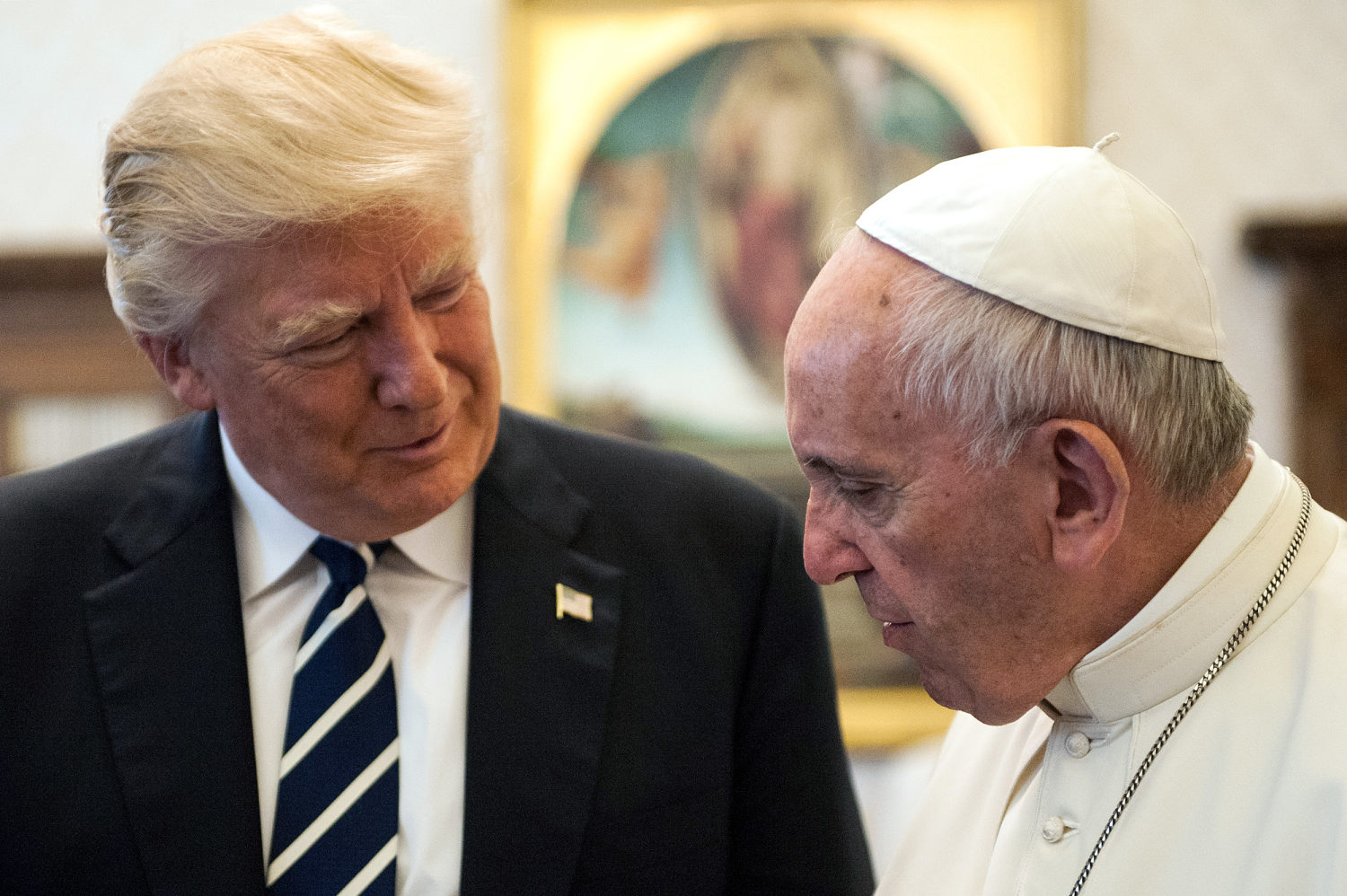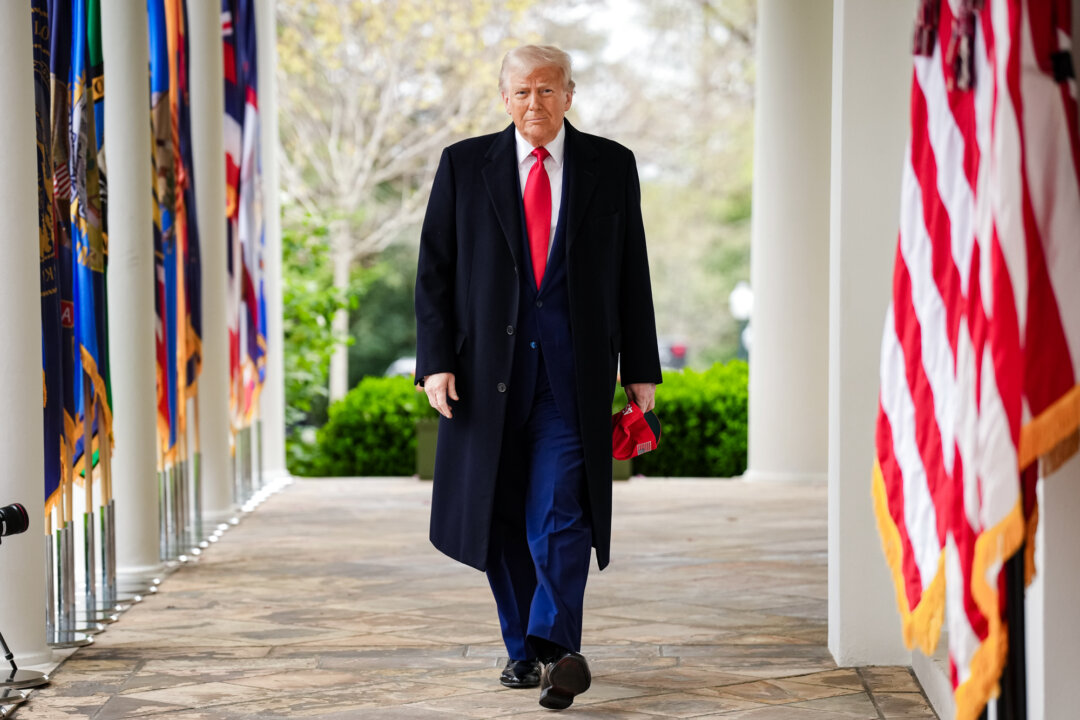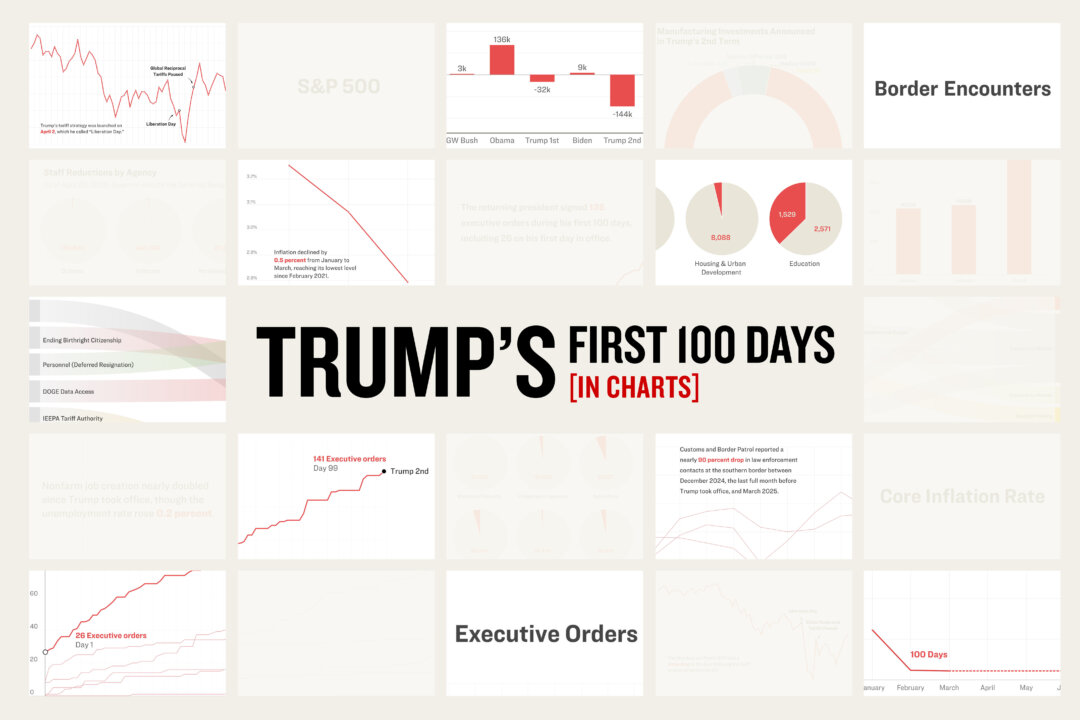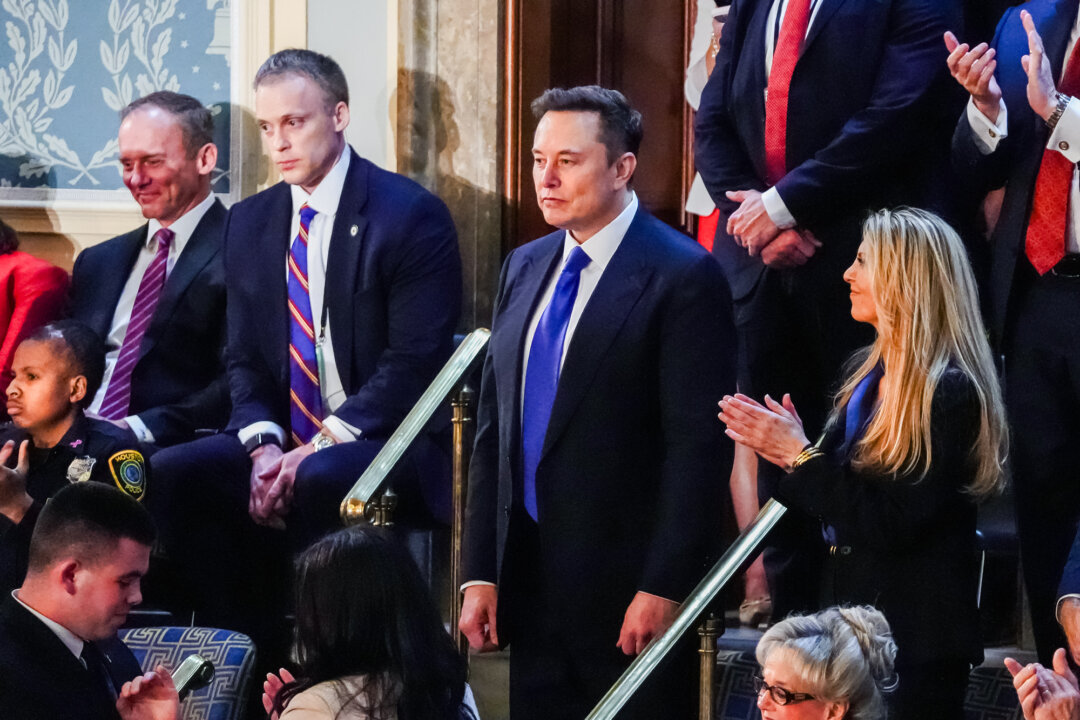When Paweł Machcewicz read President Donald Trump’s recent executive order calling for “improper, divisive or anti-American ideology” to be removed from exhibits at the Smithsonian Institution, his first reaction was “a very strong feeling of déjà vu.”
Machcewicz, a historian at the Polish Academy of Sciences, had seen this playbook before. He helped design and operate the Museum of the Second World War in Poland, where as its director he sought to shed light on civilian suffering in wartime and document the heavy losses suffered by both Poles and their allies during World War II.
As construction of the museum got underway, however, the government changed. The right-wing Law and Justice Party took a majority in Parliament, and as part of its nationalist rhetoric, its leaders objected to Machcewicz’s approach to history as unpatriotic. For the next eight years, until Law and Justice was voted out in 2023, his museum in Gdańsk became a central battlefield in a highly charged struggle over the politics of memory in Poland — with Machcewicz ultimately being removed from his post shortly after the museum opened to the public in 2017.
Machcewicz sees something similar beginning in the United States now. He believes Trump’s executive order signals an ominous intention to control the country’s historical narrative that mirrors some of the rhetoric used against museums in Poland.
With Poland’s right-wing government now out of power, Machcewicz shared his thoughts on what leaders at the Smithsonian could learn from the struggle to control Poland’s historical narrative — and why museums have become a top target for populist parties.
This conversation has been edited for length and clarity.
You helped design the Polish Museum of the Second World War starting when it was first announced in 2008, and ran it until you were ousted by the country’s right-wing government in 2017. Tell me what happened.
It was the biggest historical museum in Poland under construction at the time. We wanted to show the experience not only of the Polish nation in the war, but also of other nations. And we focused not on the military accomplishments of Polish soldiers, but on the perspective of civilians, mostly the suffering of civilians.
The concept of the museum was attacked from the very beginning by the Law and Justice Party, who at the time was in opposition. They accused the concept of being not patriotic enough, not Polish enough, too pacifistic, too European and multinational.
What are the different methods that Law and Justice used to go after you?
First of all, there were administrative obstacles: Cutting our budget, sending various audit crews who attempted to find some proof of financial irregularities or legal irregularities. And of course, we were attacked by the public TV controlled by the government, smeared by right-wing media close to the government. I was accused of not being patriotic enough, of serving foreign interests. So, all possible methods. But the most important attempt was to formally liquidate the museum by merging it with another museum — a fake museum created only on paper — before it was even open to the public, which I managed to suspend thanks to the courts.
Then the very strange part began: I tried to complete the construction, production and installation of the exhibition in the building against my own government. Long story short, I managed to open the museum to the public in 2017 — but just two weeks after the opening, the government managed to push through this concept of merging two museums and our museum was liquidated.
Usually a slide towards the authoritarian regime doesn’t happen overnight, unless it’s a military coup. It’s going step by step, piecemeal and it's possible to slow down this process if the courts are still independent or semi-independent. That’s why the courts are such an important battlefield — and why every authoritarian regime or party attempts to influence courts to be able to impose various political and administrative decisions.
President Trump released an executive order in late March calling for the removal of “improper, divisive or anti-American ideology” from public museums. What did you think when you heard about that?
When I was reading this executive order, I had a very strong feeling of déjà vu. For eight years, I lived under a government that used the same language, the same rhetoric. You could even joke that perhaps an adviser from Law and Justice helped to write this executive order, because the resemblance was so striking.
Law and Justice accused people like me of creating something they called a “history of shame,” or the pedagogics of shame: Denigrating Polish history, focusing on Polish antisemitism, on various dark sides of Polish history. And you see the same accusations in this executive order.
Another striking resemblance is that museums are so important. This executive order mentions mostly museums and institutions who promote this attitude toward history which should be correct. This is not by accident, because, as we all know, fewer and fewer people read books written by historians, but hundreds of thousands or even millions of people visit historical museums or museums that somehow deal with the past. That's why I'm not surprised that museums are on the front lines.
You say that Law and Justice accused you of promoting a “history of shame.” What’s your response to that? Is shame the emotion you were trying to evoke in museum-goers?
It was an entirely baseless accusation. The exhibit presented the whole variety of the attitudes of Poles during the war. Mostly heroism and sufferings inflicted by the German and Soviet occupiers. It included antisemitism and the pogrom of Jews in Jedwabne committed by Poles in 1941, but these topics by no means dominated the message of the museum. Certainly, I was trying to evoke neither shame nor pride, but mostly critical reflection on the past.
What did your reaction, and the public’s reaction, to your removal look like? Is there anything American scholars and museum directors can learn from that?
My strategy was quite risky in a way, but eventually it was quite efficient because I managed to open the museum to the public. And I managed to do it because I appealed to the courts and the courts gave me this additional year to conclude the process [of opening the museum].
The second strategy, which I employed in a very conscious and consistent way, was appealing to public opinion. I gave hundreds of interviews to the Polish media and international media, and I think it created pressure upon the government: At least they were not able to strangle us in silence. People came to the building of the museum and demonstrated in front of the building with banners: “Freedom of History,” “Freedom of Museums,” and so on.
Sooner or later I knew I would be removed from my position, but I wanted to make it as difficult for the government as possible. It was also a unique situation, because I knew my goal was simply to open the museum to the public. I didn't really care what happened to me after that, because it was my life mission. I should also say that I was at the time a professor at the Polish Academy of Sciences, I had tenure, so in a way, my situation was secure. I was sure I would not be unemployed, I could go back to my academic position, which I did. So I don't want to criticize anyone who chooses a more cautious strategy.
Why is it that governments like Law and Justice, like the Trump administration, want to exert control over museums?
Museums are becoming more and more popular: Every year, the attendance in museums is growing. They’re also more vulnerable than universities, at least more vulnerable than private universities. Usually museums are funded publicly, that’s why they’re more dependent on the government or on the local authorities than universities. And in the case of universities, there are usually safeguards, academic freedoms are very well-established — although the Trump administration is trying to do away with that, too.
Also, it’s a more visible field. The government can more easily — and in a shorter period of time — impose its ideas. It’s possible to prepare a new exhibition in a year, an exhibition that could reflect the views of the Trump administration on some vital aspects of history, and it's easy for them to point to it and say, “This is what we achieved.”
In completely different ways, both Poland and the United States have complicated relationships with their own history: Poland with antisemitism during World War II, and the U.S. with our history of slavery. How did you navigate the complications of Polish history when you were putting together the exhibits in the museum?
We used to look at our history exclusively in terms of heroism and martyrdom. And to a great extent it was justified, because Polish history in the last century was very difficult. The Second World War was a time of unprecedented suffering from the German and Soviet occupiers, and of a great resistance movement, and so on.
But more or less 25 years ago, a new current emerged. It started with the publication of a book by Jan Gross, Neighbors, about the massacre of Jews committed by their Polish neighbors near Jedwabne, a small town in northern Poland, in July 1941. Jedwabne was not unique: There were many other pogroms like it. And after some years, after new research from historians, it turned out that under the German occupation, Poles killed many Jews and denounced them to the Germans.
So it was a great shock for public opinion. From the beginning, the Law and Justice Party exploited the reaction of conservative segments of Polish society who didn’t want to accept this new knowledge about our history. Law and Justice created a narrative that this is all either lies or some marginal instances promoted by leftists and liberals who are not Polish enough, who wanted to denigrate their own nation. It's very similar to what the Trump people say now, who think the discussion about slavery and racism is one-sided and its aim is to denigrate or smear American history.
Why do parties like Law and Justice want to control the national historical narrative?
Law and Justice, like many other nationalistic populist movements, is very keen on using identity politics. Its key element is history, which is weaponized in order to mobilize the conservative constituency of this party, foment fears about alleged attempts to smear the historical reputation of the Polish nation and to ostracize political opponents who are presented as “not Polish enough,” serving the interests of eternal enemies of Poland like Germany and Russia. This politics of history has been intensely and to a considerable extent successfully exploited to gain and consolidate political power.
And how do you think we might want to be thinking about some of those questions as we have these discussions about American history?
Our histories, American history and Polish history, are completely different — but in a way, some developments in terms of research and memorialization in the last 20 years produced similar effects. I would call it the rejection of these new revelations that question these one-sided visions of history and of the nation.
It’s always a question of balance. I’m absolutely against the Law and Justice Party’s one-sided politics of history that focuses only on the so-called glorious parts of Polish history. But I’m also against the hyper-leftist approach that says we should reject all previous approaches to Polish history and nothing counts except for Polish antisemitism and we should do nothing else but reckon with Polish antisemitism and wrongdoings.
What could or should that balance look like in the United States?
There are some red lines that never should be crossed in a democratic country: the autonomy of research and also the autonomy of museums. What was so dangerous in the politics of history of Law and Justice was this direct interference by the government into museums. And also the criticism of the politicians: Leading politicians, including the leaders of the Law and Justice Party and also our prime minister, were attacking historians, accusing some historians by name, saying they’re not real Poles. I was treated in the same way, but the attacks were also directed at the historians who did this new research on the attitudes of Poles toward Jews during the war.
And that’s why this language from [Trump’s] executive order is so dangerous, so aggressive vis-a-vis museums. At least the names of people aren’t mentioned, but some institutions [like the Smithsonian] are. I don't think it’s the job of any government to interfere so deeply in the realm of research, academia and museums, and this executive order for me crosses the red line, or at least suggests that the government is ready to cross the red line and jeopardize the freedom of museums.
How did the museum in Gdańsk change after you were ousted?
Immediately after I was removed from the museum, I publicly declared that I would defend the integrity of the exhibition in all possible legal ways, and that if the government and the new director tried to change the exhibition, I would sue them on the grounds of copyright. It was effective in a way, because the government and the new director hesitated for more or less six months before they started changing the exhibition. And this copyright trial lasted for a few years and slowed them down and reduced the scope of the changes they introduced. So hundreds of thousands of people were still able to see the exhibition in its original shape, even after I had been fired.
They removed some elements of the exhibition that were for them too international, not Polish enough, and they introduced some new elements reflecting this politics of history of the Law and Justice Party. For example, they changed the statistics of losses suffered by various nations in the war, and presented them in such a manipulative way that it gave visitors the impression the Polish losses were the greatest.
They also introduced some new elements about the martyrdom of Polish Catholic priests, because it was also their obsession in a way they were trying to re-Catholicize the exhibition. And one of the most important changes: They introduced a new section about Poles saving Jews. Of course, in the original shape of the exhibition, Poles saving Jews were presented — but alongside Poles who denounced Jews or who killed Jews, and there was a section about Jedwabne. And now they introduced a new section that suggested that the prevalent attitude of Poles was helping and saving Jews.
What happened with the copyright case?
The court finally issued a ruling that was sort of a compromise: They decided the most striking change — a video that was presented at the end of exhibition — should be removed. It showed footage of original archival films and photographs about conflicts, about violence after the Second World War until nowadays. They said it was too international, too pacifistic and anti-war, and they replaced it with a cartoon animation only about Polish history, about Polish soldiers and Polish heroes. And the court decided that it was such a clear violation of the central message of the exhibition, that it should be removed.
But the court evaded and said the other changes were minor and not visible to an average visitor. So it was sort of a middle way. But this copyright trial lasted for a few years, and it ended in the last year of the Law and Justice Party’s rule.
After Poland’s 2023 parliamentary elections, the Law and Justice Party was ousted and former Prime Minister Donald Tusk returned to lead the new government. What’s happened with the museum since then?
After the new government [under Tusk] took over in December 2023, very soon the director nominated by the Law and Justice Party was removed and I got an offer to go back to my position as director. I did not accept it, because it would have been difficult to come back after so many years.
But I’m now the chairman of the board of the museum. One of the historians who co-created this museum with me was nominated to the position of director. We removed all the changes introduced by Law and Justice, and we reintroduced the original shape of the exhibition.
The Law and Justice Party mobilized their supporters and organized a demonstration in front of the museum. So it's still a very emotional and political issue. But I have now the great satisfaction of saying that all these political changes that were introduced into the exhibition, which are emblematic of Law and Justice, don’t exist anymore.
What advice would you give to people concerned about the Trump administration’s actions?
The experience of eight years under Law and Justice shows it’s possible to take over museums and hire new directors, but it's still a long way off from imposing one narrative about history in a democratic society. As long as there are independent universities and independent media, the government can’t control the whole narrative.
In Poland, this politics of history was one of the priorities of the Law and Justice government. They created new institutions that employed historians with research following the lines imposed by the government — but still they weren’t able to control the universities. In the case of museums it was easier: They controlled most of the museums. But they lost power after eight years, and it turns out that we still live in a free country with a variety of approaches to history. Eight years was not enough in Poland, and I don’t think four years will be enough in the U.S.
Many people in the U.S. probably have the feeling that this offensive by the Trump administration is overwhelming, that you can’t stop it — it’s so aggressive, the language is so aggressive. But there are always some ways of slowing it down, of gaining time. And with determination from people who want to defend democracy and the autonomy of museums, there are always ways to do something.
.png)















 English (US)
English (US)